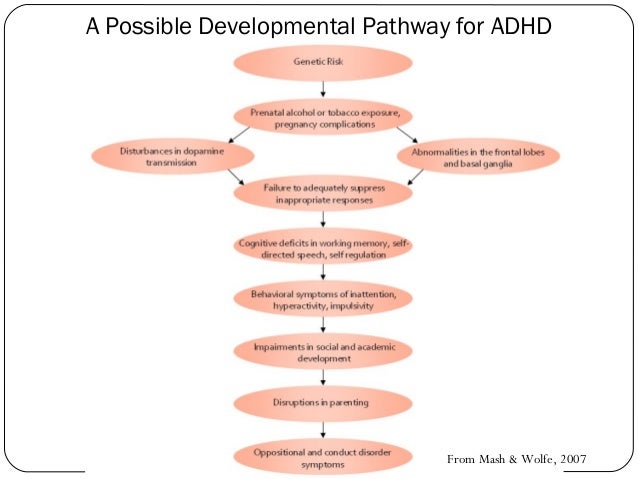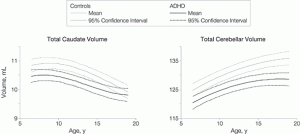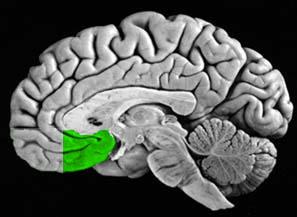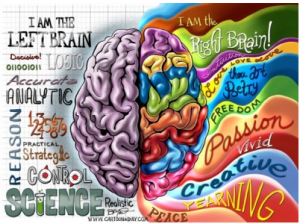Take a look at the following pictures and cartoons…



Did you laugh? Chances are you’ve probably seen these types of pictures before, or heard jokes about attention disorders. While these jokes are funny, there is little that’s very funny about this disorder.
Background About the Disorder:

Attention disorders are extremely common among children. There are no distinct physical signs; the disorder is identified through characteristic patterns of behavior. There are three primary types attention disorders that fall under the umbrella of Attention Deficit Hyperactive Disorder: hyperactive (known as ADHD), deficit (known as ADD) and a combination between the two. Combined presentations is the most common subtype of ADHD.
ADHD is one of the most common childhood disorders and can continue throughout adolescence into adulthood. ADHD is more common among very young children prior to entering school, while ADD is often not diagnosed until middle school. There is thought to be a genetic basis for this disorder, and it is influenced by hereditary factors. Boys are four times as likely as girls to have this disorder, and 11% of American children from age 13 to 18 have this disorder. (1) There is estimated to be 6.4 million children in the US diagnosed with ADHD. Most children “outgrow” this disorder, but some carry their difficulties into adulthood. In fact, approximately 10 million Americans are diagnosed with ADHD. (8) Of the children referred to mental health clinics, 50% are children with ADHD-related problems.

Possible developmental pathway for ADHD. Retrieved from Google.
There are distinct differences in symptoms between ADD and ADHD. To diagnose a child, however, there are certain criteria that must be met. The symptoms must be present before age 12 and in two or more settings (home, school, work, peer relationships).
– Be easily distracted, miss details, forget things, and frequently switch from one activity to another
– Become bored with a task after only a few minutes, unless they are doing something enjoyable
– Have difficulty focusing attention on organizing and completing a task or learning something new
– Have trouble completing or turning in homework assignments, often losing things
– Not seem to listen when spoken to
– Daydream, become easily confused, and move slowly
– Have difficulty processing information as quickly and accurately as others
– Struggle to follow instructions.
– Fidget and squirm in their seats
– Talk nonstop
– Dash around, touching or playing with anything and everything in sight
– Have trouble sitting still during dinner, school, and story time
– Be constantly in motion
– Have difficulty doing quiet tasks or activities.
https://www.youtube.com/watch?list=PLEbm7wJ3WiYy45JHXcdEzsiE-RxGG4_Xe&t=5&v=rp1IleFD4D0
Happening in the Brain?
Brain imaging studies have revealed that, in youth with ADHD, the brain matures in normally but is delayed, on average, by about 3 years.(3) The delay is most pronounced in brain regions involved in thinking, attention, and planning. For example, there is often dysfunction and lower activity in the prefrontal lobe, which is involved in inhibition and executive function.

Graph shows the caudate volume and the cerebellar volume of patients with ADHD and without ADHD. Notice how ADHD patients consistently have lower volumes. Retrieved from Castellanos, 2002.
More recent studies have found that the outermost layer of the brain, the cortex, shows delayed maturation overall,(4) and a brain structure important for proper communications between the two halves of the brain, the corpus callosum, shows an abnormal growth pattern.(5) Additionally, a study has shown that children with ADHD have smaller cerebellums. The caudate nucleus volume was found to be lower and asymmetrical in children with ADHD. The caudate nucleus is one of the three primary structures of the basal ganglia and is associated with voluntary movement, learning, memory, sleep, and social behavior.

Sagittal view of the posterior cingulate cortex (highlighted in green). Retrieved from Google.
Researchers use fMRI to study the brain of those with and without ADHD. They were specifically looking at the posterior cingulate cortex and the medial prefrontal cortex. The posterior cingulate cortex and the medial prefrontal cortex are central nodes in the default mode network (DMN) – a network of brain regions that are active when the individual is not focused on the outside world and the brain is at wakeful rest.

Sagittal view of the medial prefrontal cortex. Retrieved from Google.
Researchers found that in people without ADHD, the activity in those brain regions were synchronous, but in ADHD children and adults, it was no longer synchronized. A newer study found that adults who were diagnosed with ADHD as children have a restored normal synchrony pattern, and their brains look like those of people who never had ADHD. (8)
Resources:
(1)http://www.nimh.nih.gov/health/topics/attention-deficit-hyperactivity-disorder-adhd/index.shtml
(2)Konrad, Kerstin, and Simon B. Eickhoff. “Is the ADHD Brain Wired Differently? A Review on Structural and Functional Connectivity in Attention Deficit Hyperactivity Disorder.” Human Brain Mapping Hum. Brain Mapp. 31.6 (2010): 904-16. Web.
(3)Shaw P, Eckstrand K, Sharp W, Blumenthal J, Lerch JP, et al. Attention-deficit/hyperactivity disorder is characterized by a delay in cortical maturation. Proc Natl Acad Sci U S A. 2007 Dec 4;104(49):19649–54. Epub 2007 Nov 16. PubMed PMID: 18024590; PubMed Central PMCID: PMC2148343.
(4)Shaw P, Malek M, Watson B, Sharp W, Evans A, Greenstein D. Development of cortical surface area and gyrification in attention-deficit/hyperactivity disorder. Biol Psychiatry. 2012 Aug 1;72(3):191–7. Epub 2012 Mar 13. PMID: 22418014.
(5)Gilliam M, Stockman M, Malek M, Sharp W, Greenstein D, et al. Developmental trajectories of the corpus callosum in attention-deficit/hyperactivity disorder. Biol Psychiatry. 2011 May 1;69(9):839–46. Epub 2011 Jan 17. PMID: 21247556.
(6)Castellanos F, Lee PP, Sharp W, et al. Developmental Trajectories of Brain Volume Abnormalities in Children and Adolescents With Attention-Deficit/Hyperactivity Disorder. JAMA. 2002;288(14):1740-1748. doi:10.1001/jama.288.14.1740.
(7)https://en.wikipedia.org/wiki/Caudate_nucleus
(8)http://mcgovern.mit.edu/news/news/inside-the-adult-adhd-brain/



